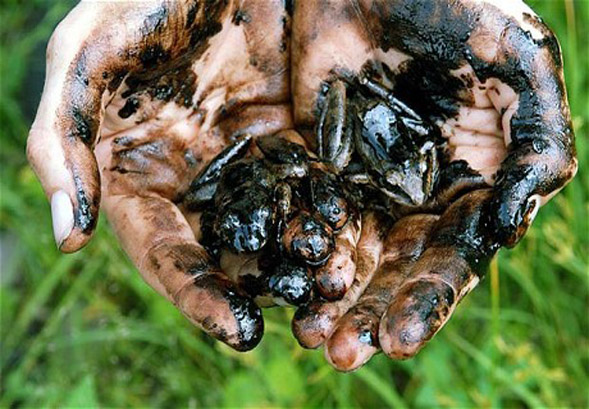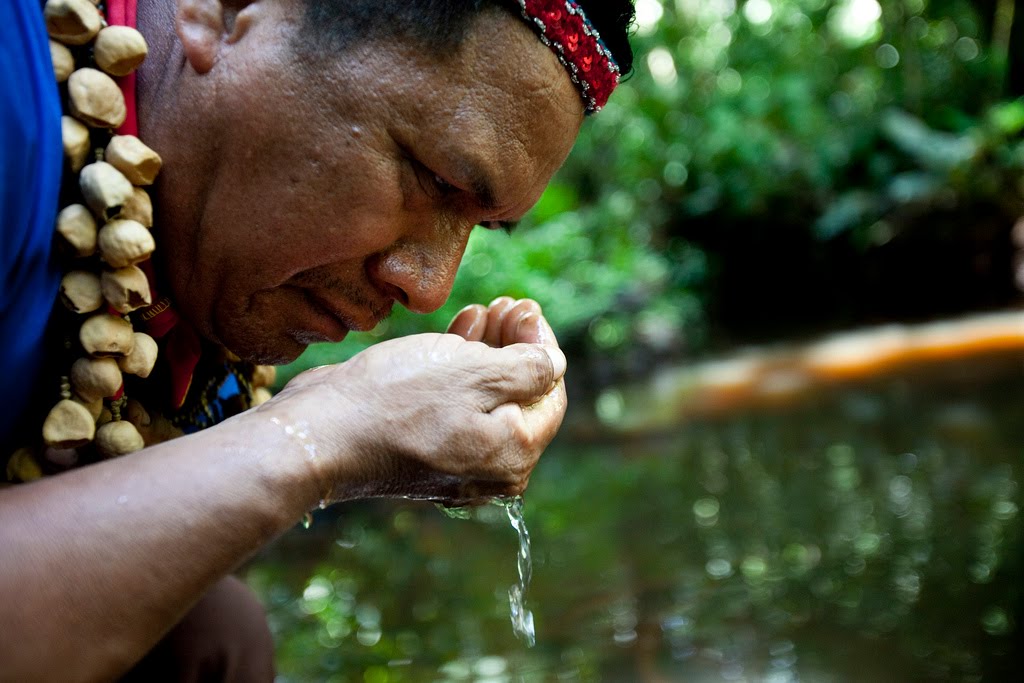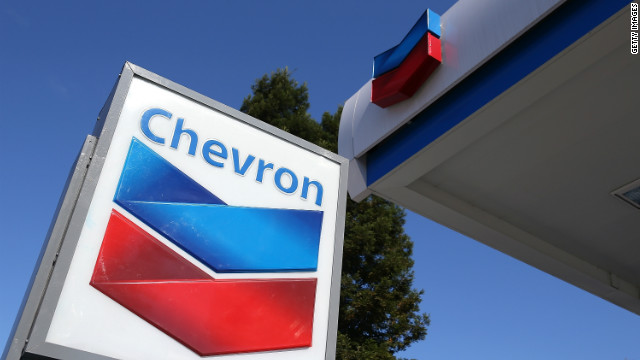An End to Corporate Impunity: Making Chevron Accountable for Environmental Disaster
At an October 5 conference hosted by the nonprofit, Resources for the Future, economist Joseph E. Stiglitz stated, “We now know why the invisible hand is invisible: because it is often not there.” The Columbia University professor supported this claim by noting that the people with the fewest means pay the highest price in this increasingly unbalanced globalized world. Some prominent examples of groups who have suffered enormously from corporate exploitation are the indigenous tribes of the Ecuadorian Amazon. Rich in wildlife and natural resources, the tropical rainforest, known to natives as the Oriente, has provided its inhabitants with a vital foundation of food and water for millennia, while fostering a cultural heritage unlike any other in the world. Indigenous tribes, including the Cofán, Secoya, Kicha and Huarani peoples, lived traditional lifestyles completely untouched by modern civilization, until 1964, when U.S. oil firm Texaco discovered oil in the northern region of the Ecuadorian jungle.1

For 28 years, Texaco, bought out by Chevron in 2001, made cost-cutting operational decisions that contaminated the Amazon’s rivers and polluted among the world’s most treasured ecosystem.2 The oil giant’s negligent drilling practices have left natives to suffer from an array of deplorable health complications, an erosion of their culture, and quite possibly, the planet’s worst ongoing environmental disaster. The 1990s was a historical period for Ecuadorian indigenous groups, as they finally joined forces to combat corporate exploitation, building a lawsuit against present-day Chevron that exposed the company for its detrimental impact on Amazonian communities. After decades of court cases and appeals, the legal battle is finally coming to a close, with a defeated Chevron required to pay an unprecedented $19 billion USD to Ecuador’s most affected victims.3 Struggling to discover new loopholes in the case, Chevron may finally be forced to suffer the consequences of its own actions, respecting a ruling that in the future could make multinational corporations accountable for their environmental and human rights abuses around the globe.
Oil Giant Stomps Through Vulnerable Territory
Amazonian natives had no idea what to expect when oil workers entered their land and founded Lago Agrio, a town named after Texaco’s birthplace in Sour Lake, Texas, nearly fifty years ago.4 Similarly, the Ecuadorian government was unaware of the forthcoming catastrophic damages Texaco would impose on their prized rainforest, as the oil giant was the first U.S. company to drill for oil in the Amazon. Trusting the corporation’s modern oil practices and technological initiatives, Ecuador’s national oil company, Petroecuador, united with Texaco to form Texpet, creating a toxic relationship between corrupt government officials and corporate representatives. This relationship was especially lethal during the remediation period, in which Chevron claims to have spent $40 million USD in what plaintiffs call a “sham” clean up.5 Nevertheless, before the oil company left Ecuador in 1992 and began fulfilling the 1995 Remediation Action agreement, much of the damage had already been done. Unlike other oil spills, where billions of gallons of crude were spilled during one event, Texaco’s cheaply designed extraction complex of 350 wells led to “extreme systematic pollution and exposure to toxins from multiple sources on a daily basis for nearly three decades,” according to Chevron Toxico, an organization campaigning for Ecuadorian justice.6
In a recent statement, Chevron representatives declared that the company “is defending itself against the false allegation that it is responsible for alleged environmental and social harms in the Amazon region of Ecuador,” claiming that its subsidiary, Texaco, fully remediated its share of environmental impacts arising from oil production prior to its departure.7 Despite receiving a release of liability from negligent government officials, Texaco left behind over 900 open toxic waste pits; a number of which the company claims is the responsibility of Petroecuador.8 However, Chevron cannot place all of the blame on Petroecuador, as the oil giant itself admitted to dumping over 16 billion gallons of cancer-causing production waters, a byproduct of the drilling process, into the streams of the Oriente. Thus, in order to save funds, Texaco chose to use illegal environmental practices that contaminated the Amazon waterways and harmed many of the 30,000 people who depend on the tainted waters for drinking, cooking, bathing, cleaning, and fishing.9
The rivers’ black blankets, as the locals like to call them, are only one of the many notorious legacies Texaco left behind in Ecuador’s jungle. Along with the dumping of production waters and the abandonment of unlined waste pits, Chevron never even developed a plan to contain and clean up its frequent oil spills and in the process destroyed numerous documents that mentioned any of the hazardous ruptures. Additionally, according to the Amazon Defense Coalition’s “Summary of Overwhelming Evidence Against Chevron in Ecuador Trial,” “…Chevron exclusively used poorly maintained flares to burn natural gas that caused extensive air pollution… Texaco routinely burned off oil from pits and spills, contaminating the air with huge plumes of black smoke.”10 For nearly thirty years, the crude operator violated countless laws designed to protect the Amazon’s ecosystem and the health of its inhabitants, perpetuating the contamination and depriving natives of the resources they depend on daily for survival.
Contaminated Water Causes Cancer and Other Diseases Among Indigenous
Beyond contaminating the environment, oil extraction in the Amazon has also had a detrimental impact on the health of the rainforest’s residents, polluting the soil and waterways with toxins and carcinogens. According to Richard Cabrera, a geological engineer appointed by the Ecuadorian court, of the $18 billion USD that Amazonian communities originally demanded, $9 billion should go to conducting an extensive clean-up, along with the development of new health and water systems. The other half should go to compensate cancer deaths.11 Although this number may seem overwhelming, plaintiffs have argued it is still pennies on the dollar, considering that Chevron earned billions from the project, while its substandard operational practices decimated the local population.
According to Ecuador’s National Cancer Registry, from 1985 to 2000, over 1200 cases of cancer were reported from provinces in oil-producing regions, including Sucumbios, Orellana, Napo, and Pastaza.12 Because the Amazon does not have its own cancer registry, this number only reflects the cases that were referred to Quito, excluding the affected victims that do not have the means to travel to a healthcare facility. Based on a 2004 study by Miguel San Sebastian and Ana-Karin Hurtig, cancer incidents were significantly higher among men and women living in oil-exploited provinces than in any other Ecuadorian region, with men suffering from cancers of the stomach, rectum, skin melanoma, soft tissue, and kidneys and women suffering from cancer of the cervix and lymph nodes.13 With billions of gallons of untreated toxic waste, gas, and oil released into the environment, it is difficult to label the increasing rate of disease in the Amazon as a coincidence.

Many indigenous parents have had to perform the devastating task of burying their children at a very young age. Pregnant women exposed to the Amazon’s toxins frequently suffer from miscarriages, and many of the children who live through the tumultuous pregnancies are born with a range of birth defects, reducing their chances of survival in this highly polluted jungle. Childhood leukemia is especially prevalent in the dreary rainforest. According to San Sebastian and Hurtig’s report “Incidence of Childhood Leukemia and Oil Exploitation in the Amazon Basin of Ecuador,” studies found elevated rates of leukemia among children between the ages of zero and 14 in oil contaminated areas.14 Making matters worse for the victims, Ecuador’s oil-producing regions contain few healthcare facilities, providing minimal services that lack chemotherapy treatment for cancer patients.15 Due to geographic isolation, poor infrastructure, and socioeconomic status, Amazonians are severely limited in their access to adequate healthcare, leaving a sense of hopelessness for parents and their children in this disease-prone society.
Indigenous Solidarity Brings Chevron to Trial
Enraged from having to prematurely bury their own people beneath the dark jungle, indigenous groups, along with environmental human rights organizations, decided to seek justice. In 1993, 30,000 Ecuadorians filed a class action lawsuit against Texaco, which Chevron inherited when the two companies merged in 2001.16 Organizations such as Amazon Watch, Amazon Defense Coalition, and the Confederation of Indigenous Nationalities of Ecuador (CONAIE), Ecuador’s strongest indigenous union, supported the Amazonian settlers in their quest for justice. For the next twenty years, these organizations would use activism and media pressure to ensure that the corporate criminal fulfills its moral obligation to the devastated land and people it left behind.
Texaco stalled the trial for ten years after a U.S. judge granted the company’s request to move the case from New York to Lago Agrio. The manipulative change of the trial’s location was the company’s first of many delaying tactics that prevented a resolution for the rainforest’s indigenous communities. As the years passed, and Texaco continued to use its influence to obstruct justice, more and more Ecuadorians died of pollution-related diseases. When the case reopened in 2003, present-day Chevron did not have the good fortune of being granted a jury, as they would have in New York, but were instead at the mercy of one Ecuadorian judge, Juan Nuñez. The judge’s nationality led to a series of controversies, with Silvia Garrigo, manager of Chevron Global Issues and Policy, stating that the court’s experts and judge were biased and prone to fraud due to the country’s corrupt politicized judicial system.17
Chevron’s attack on Ecuador’s court system became a common theme throughout the trial, with Chevron lawyer Adolfo Callejas arguing in his opening statement that the Ecuadorian court had no jurisdiction to try the case. It was believed that Chevron could not be sued because of the 1995 Ecuadorian agreement that released Texaco of liability. However, according to the plaintiffs’ lead American lawyer, Steven Donzinger, “Our clients never released Texaco. That is the critical distinction. That was an agreement between the government and Texaco. We are not part of that agreement and we are not bound by that agreement.”18 Chevron’s righteous corporate attitude is the reason why indigenous groups never believed they had the right to sue an American company on Ecuadorian soil. In March 2011, however, indigenous doubts were reversed, after the Ecuadorian judgment ordered Chevron to pay the victorious Amazonians a historic $19 billion USD.19 After a year and several attempts to block the global judgment and with the U.S. Supreme court denying their bid, Chevron is finally being forced to surrender their assets to their most affected victims.

The Chevron Ecuador case is a landmark victory for indigenous groups everywhere. The verdict against Chevron has produced a number of positive implications for other poor indigenous citizens of the developing world. The devastation of the Amazon is a testament to Stiglitz’s remark that an unregulated market mainly hurts society’s most vulnerable people. However, the Amazonians’ success throughout the legal process exposes the invisible hand for all its ethical violations and brings exploitative corporations, like Chevron, to justice. Nevertheless, this unprecedented victory does not ease the pain the indigenous have suffered and will continue to endure in the next several years. Families continue to bury their loved ones, as severe health complications persist from the pollution, and despite the seizure of Chevron’s assets, Ecuador continues to propose new extractive projects \that harm the environment and the people in it.
The Ecuadorian government, who relies heavily on oil for economic development, must make responsible decisions in regards to future extractive projects. Examples of this kind of prudent governance include the Palacio Administration’s 2006 efforts with indigenous and conservation groups to prevent the Brazilian national oil company, Petrobras, from building a road through the Amazon.20 Furthermore, the government must make healthcare more accessible to everyone while taking greater precautionary measures for environmental disasters. Although globalization has led to the environmental degradation of the Amazon and severe health complications of its inhabitants, Ecuador remains a viable economic player in the region. However, government officials must focus its attention on environmental sustainability and social justice if it wants to maintain an economic security that benefits all of its citizens.
Jade Vasquez, Research Associate at the Council on Hemispheric Affairs
Please accept this article as a free contribution from COHA, but if re-posting, please afford authorial and institutional attribution. Exclusive rights can be negotiated.
Sources:
1 Chevron Toxico. “A Rainforest Chernobyl.”Accessed October 15, 2012. http://chevrontoxico.com/about/rainforest-chernobyl/.
2 IBID.
3 “Supreme Court Denies Chevron $19bn Ecuador Appeal.” BBC News. October 9, 2012. http://www.bbc.co.uk/news/world-us-canada-19892561.
4 Chevron Toxico. “A Rainforest Chernobyl.”Accessed October 15, 2012. http://chevrontoxico.com/about/rainforest-chernobyl/.
5 Chevron Public Affairs. “Texpet’s Remediation and Revegetation of Oilfield Pits in the Ecuadorian Amazon.” Accessed October 14, 2012. http://www.texaco.com/sitelets/ecuador/docs/texaco_ecuador_remediation_en.pdf
6 Chevron Toxico. “A Rainforest Chernobyl.”Accessed October 15, 2012. http://chevrontoxico.com/about/rainforest-chernobyl/.
7 Chevron. “The Facts About Chevron in Ecuador and the Plaintiffs’ Strategy of Fraud.” January 2012. http://www.chevron.com/documents/pdf/ecuador/ecuador-lawsuit-fact-sheet.pdf?.
8 Amazon Defense Coalition. “Understanding Chevron’s ‘Amazon Chernobyl’.” Feburary 1, 2009. http://www.texacotoxico.org/eng/node/143.
9 Amazon Crude. 60 Minutes. Performed by Scott Pelley.2009. New York: CBS News, Medium.
“Summary of Overwhelming Evidence Against Chevron in Ecuador Trial.” Amazon Defense Coalition. January 2012. http://chevrontoxico.com/assets/docs/2012-01-evidence-summary.pdf.
10 “Summary of Overwhelming Evidence Against Chevron in Ecuador Trial.” Amazon Defense Coalition. January 2012. http://chevrontoxico.com/assets/docs/2012-01-evidence-summary.pdf.
11 Amazon Crude. 60 Minutes. Performed by Scott Pelley.2009. New York: CBS News, Medium.
12 Sociedad de Lucha contra el Cáncer. Cáncer en regiones del Ecuador. Quito, Ecuador: SOLCA, 2001.
13 San Sebastián, Miguel and Anna-Karin Hurtig. “Oil Exploitation in the Amazon Basin of Ecuador: A Public Health Emergency.” Rev Panam Salud Publica/ Pan Am Public Health. 15.3 (2004): 205-211. http://www.texacotoxico.org/eng/sites/default/files/Public_Health_Emergency_RPSP%20%28ENG%29.pdf.
14 San Sebastián, Miguel and Anna-Karin Hurtig.”Incidence if Childhood Leukemia and Oil Exploitation in the Amazon Basin of Ecuador.” International Journal of Occupational and Environmental Health. 10.3 (2004): 245-250. http://www.texacotoxico.org/eng/sites/default/files/ChildhoodLeukemia.pdf.
15 San Sebastián, Miguel and Anna-Karin Hurtig. “Oil Exploitation in the Amazon Basin of Ecuador: A Public Health Emergency.” Rev Panam Salud Publica/ Pan Am Public Health. 15.3 (2004): 205-211. http://www.texacotoxico.org/eng/sites/default/files/Public_Health_Emergency_RPSP%20%28ENG%29.pdf.
16 Crude: The Real Price of Oil. Directed by Joe Berlinger.2009. New York, NY: First Run Features, 2010. DVD.
17 Amazon Crude. 60 Minutes. Performed by Scott Pelley.2009. New York: CBS News, Medium.
18 IBID.
19 “U.S. Supreme Court Squelches Chevron Appeal on Ecuador Case.” The Chevron Pit. October 9, 2012. http://thechevronpit.blogspot.mx/2012/10/us-supreme-court-squelches-chevron.html.
20 “Petrobras Abandons Plans for Oil Road in Ecuadorian Amazon Park.” Environment News Service. April 24, 2006. http://www.ens-newswire.com/ens/sep2005/2005-09-08-01.asp.
See Also:
In Ecuador, Political Realities Widen Marginalization Traditions as Country Feels Boom
Green Roofing in Mexico City: A Sustainable Success in Countering Food Insecurity and Climate Change

